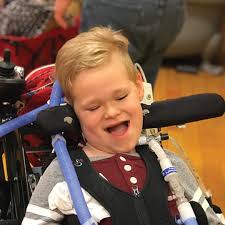Overview.
Acute flaccid myelitis (AFM) is a rare, but serious polio-like condition that affects the body’s nervous system, specifically the area of the spinal cord called gray matter, which causes the muscles and reflexes in the body to become weak; even to the point of making breathing difficult.
Before being described in 2014, AFM might have been diagnosed as a type of transverse myelitis. However, one difference between AFM and transverse myelitis has been found by magnetic resonance imaging (MRI) scans. The gray matter of the spinal cord is inflamed in people with AFM.

The number of cases of AFM has been rising. However, the Centers for Disease Control and Prevention predict that less than 1 person per 1 million people per year in the US will develop AFM. So far, most of the reported cases have involved people younger than age 18, but adults can get AFM.
Causes.
In many cases of acute flaccid myelitis, doctors are unable to identify an exact cause of the illness. However, AFM has been connected to a variety of diseases and external factors, including:
- Germs and viral infections: Enteroviruses (such as polio), mosquito-borne viruses (such as West Nile virus), and viruses responsible for the common cold have all been linked to AFM.
- Environmental toxins
- Genetic disorders and autoimmune conditions: Conditions that mistakenly attack bodily tissues as foreign invaders, such as Guillain-Barre syndrome, may cause AFM.
Symptoms.
The most common signs and symptoms of acute flaccid myelitis include:
- Sudden arm or leg weakness
- Sudden loss of muscle tone
- Sudden loss of reflexes
Other possible signs and symptoms include:
- Difficulty moving the eyes or drooping eyelids
- Facial droop or weakness
- Difficulty with swallowing or slurred speech
- Pain in the arms, legs, neck or back
Uncommon symptoms might include:
- Numbness or tingling
- Inability to pass urine
Respiratory failure is one of the more severe symptoms, caused by the weakening of the breathing muscles. Additionally, blood pressure instability and potentially fatal variations in body temperature are conceivable.
If you or your child exhibits any of the above-mentioned signs or symptoms, you should consult a doctor right away.
Diagnosis.
The tests listed below can aid in the identification of AFM. A doctor may:

Check your nervous system.
A doctor can check a patient’s neural system, as well as the areas of the body where they experience muscle weakness, slow reflexes, and weakness.
Carry out a Magnetic Resonance Imaging.
In order to examine a patient’s brain and spinal cord for alterations in the grey matter that could point to AFM, a practitioner may also use an MRI (magnetic resonance imaging).
Perform laboratory tests
To check for symptoms of inflammation, a doctor may do lab tests on the cerebrospinal fluid, the liquid that surrounds the brain and spinal cord.
Check the nerves condition
A clinician may check nerve conduction (impulse sent along a nerve fiber) and response to help detect where the weakness is occurring.
Because AFM exhibits many of the same symptoms as other neurologic conditions such transverse myelitis and Guillain-Barre syndrome, diagnosing the condition can be challenging. To help with the diagnosis of AFM, clinicians should think about speaking with experts in neurology and infectious illnesses. Clinicians can distinguish between AFM and other neurologic diseases using tests and examinations.
Treatment.
AFM cannot be cured by any recognized medical procedure or drug. Patients are initially given supportive care, such as hospitalization, steroid medicines, and therapies like plasmapheresis and/or Intravenous immune globulin IVIG. Both occupational and physical therapy are crucial. Children frequently attend therapy sessions for weeks or months. For the best results, children with AFM need to be treated by a multidisciplinary team.
If muscle movement does not come back a surgical procedure can be performed to help. We refer to these as nerve transfers. This is a process of finding a healthy, functioning nerve and attaching it to an unresponsive muscle. Movement is possible after 9 to 12 months because the working nerve takes time to integrate into the muscle. This aids in rewiring the nervous system to offer kids greater
Prevention and Control.
There is no specific course of action to take in order to prevent AFM because we do not know what causes AFM in an individual. However, you can take precautionary measures to avoid contracting a virus.
There are many things you can do to reduce the chance of you and your child contracting a virus:
- Wash your hands frequently for at least 20 seconds with soap and water.
- Do not touch your face with dirty hands.
- Stay away from sick people’s close quarters.
- Maintain a current vaccination schedule.
The likelihood of a virus spreading can be decreased by:
- Use a tissue or the upper sleeve of your shirt to sneeze and cough instead of your hands.
- If you or your child is sick, stay at home.
Disclaimer: The information contained in this article is provided as an information resource only. This information should not be used as a substitute for professional diagnosis and treatment. You should always consult your doctor or other healthcare professional before taking any medication.
